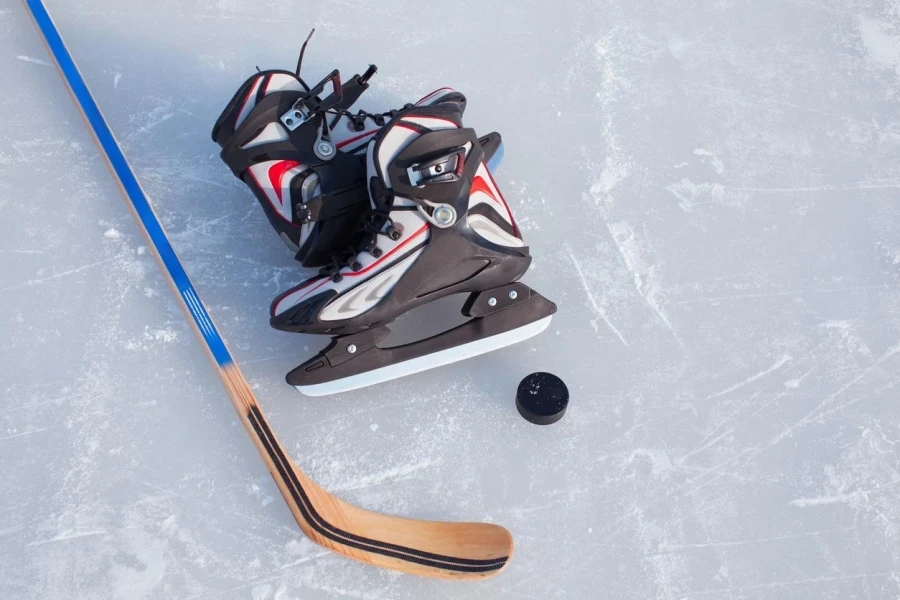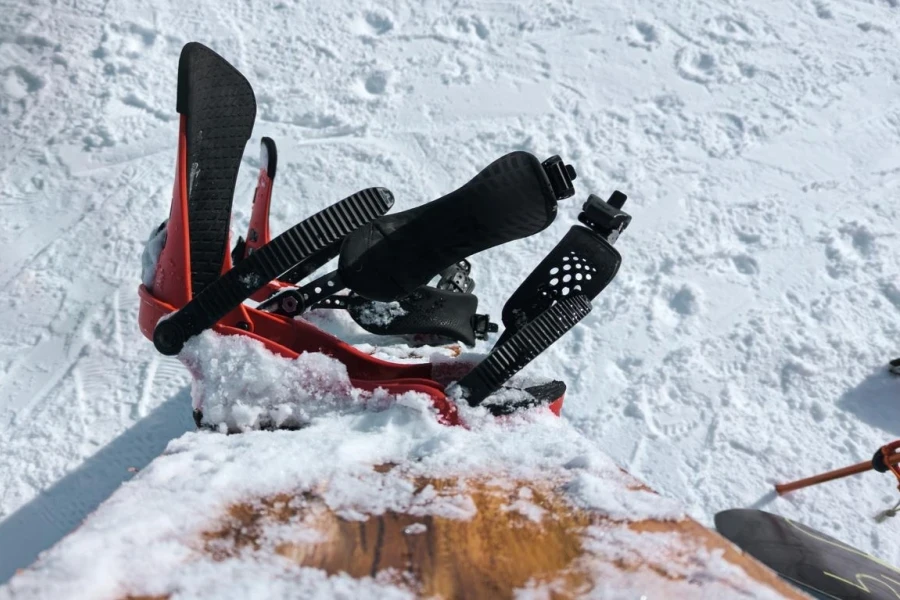Table of Contents
1. Introduction
2. Main types and uses of snow & ice equipment
3. Market insights for 2025
4. Key factors to consider when selecting equipment
5. Top snow & ice equipment models for 2025
6. Conclusion
Introduction
Snow and ice equipment plays a crucial role in maintaining safety and accessibility during winter months. From snow pushers and plows to advanced de-icing tools, these products are designed to handle various conditions, making snow removal faster and more efficient. The right equipment not only saves time but also extends the lifespan of vehicles used for clearing. Selecting appropriate tools ensures smoother operations, whether for managing small driveways or extensive commercial spaces. Properly matched equipment increases productivity, helping businesses maintain reliable operations even in challenging winter conditions.
Main types and uses of snow & ice equipment

Snow pushers: versatility and optimal uses
Snow pushers are vital for moving large amounts of snow efficiently across wide areas. With their broad blades, they can push snow without needing to lift it, making them ideal for parking lots, roads, and large open spaces. Many models include features that help protect surfaces, like adjustable edges to handle bumps or uneven terrain. These pushers often attach to different vehicles like tractors or skid steers, which makes them adaptable for various conditions, from light to heavy snowfalls.
Plows for various vehicle types: straight, V-plows, and winged plows
Snow plows are a staple in snow removal, especially for clearing large areas quickly. Straight blade plows are simple and effective, great for pushing snow in one direction, making them suitable for long stretches like roads and driveways. V-plows offer more flexibility; their adjustable blades allow them to cut through deeper snow and adapt to varying conditions. Winged plows add even more versatility, with extendable sides that can increase the coverage area, making them efficient for both large and small spaces.
De-icing tools: spreaders and salt applicators
De-icing tools, like salt spreaders, help maintain safe surfaces after snow is removed. These tools evenly spread salt or other melting agents over roads, sidewalks, and parking lots, preventing ice from forming. They come in various sizes, from small, handheld models to larger, vehicle-mounted versions for bigger spaces. Modern spreaders often have adjustable settings to control how much salt is used, ensuring the right amount is applied to keep surfaces clear without waste.
Comparing equipment for residential, commercial, and industrial needs

Choosing the right snow and ice equipment depends on the setting. For residential areas, smaller tools like snow pushers or single-stage snow blowers are effective, as they are easy to use in confined spaces and light snow. Commercial spaces, such as office buildings or shopping centers, often need mid-sized equipment like V-plows or compact salt spreaders, capable of handling heavier snowfalls over larger areas. Industrial sites, like warehouses or airports, benefit from heavy-duty machines, such as multi-stage snow blowers and large loaders with snow attachments, which can tackle extensive areas and deep snow. Selecting the right equipment ensures efficiency and safety across different environments.
Market insights for 2025
Growth Trends in the Snow & Ice Equipment Market
As of 2024, the global snow and ice equipment market was valued at approximately USD 3.2 billion, with forecasts indicating it will reach around USD 5.1 billion by 2032. This projected expansion reflects a compound annual growth rate (CAGR) of 5.4%, driven by increasing investments from municipalities and commercial sectors in advanced snow management tools like plows, de-icing machines, and blowers. These tools are critical for ensuring safety and maintaining essential operations during winter months. Both public and private sectors are prioritizing reliable snow management solutions to sustain operations under challenging weather conditions, as noted by Dataintelo.
Key factors driving demand: technological advancements and regional snowfall trends
Technological advancements and regional snowfall patterns are key factors influencing demand in the snow and ice equipment market. In areas with frequent heavy snowfall, such as North America and Europe, advanced tools like GPS-guided plows and automated spreaders have become essential for enhancing precision and efficiency in snow management. Meanwhile, emerging markets in the Asia-Pacific region are seeing growth due to urban expansion and a rise in winter tourism, which increases demand for modern snow removal solutions and supports infrastructure development.

Expected growth in commercial applications
The commercial sector is a major growth area for snow and ice equipment in 2025. Businesses are prioritizing versatile tools like multi-use plows and high-capacity spreaders to maintain safe and operational facilities. The adoption of smart technologies, such as automated snow management systems, allows companies to better adapt to varying snow conditions and improve overall efficiency, making these advanced solutions a critical part of winter operations.
Key factors to consider when selecting equipment
Importance of equipment compatibility with vehicle GVWR
Ensuring that snow removal equipment is compatible with a vehicle’s Gross Vehicle Weight Rating (GVWR) is crucial for safety and performance. The GVWR indicates the maximum weight that a vehicle can safely handle, including the weight of the vehicle itself, passengers, cargo, and any attached snow removal equipment. Matching the snow plow or spreader with the correct GVWR prevents overloading, which can strain the vehicle’s suspension and compromise safety. Heavier-duty trucks with higher GVWRs can support larger plows, allowing them to manage more challenging snow conditions effectively.
Size and weight considerations for different environments
The size and weight of snow removal equipment play a significant role in selecting the right tools for different environments. For large commercial spaces or open parking lots, bigger equipment like winged plows can move more snow in fewer passes, making them time-efficient. However, smaller properties or tight spaces, such as residential areas, benefit from lighter, more compact equipment that offers easier maneuverability. Balancing the weight of the equipment with the type of terrain ensures efficient snow removal while avoiding damage to the surfaces being cleared.
Maintenance needs for optimal longevity and performance

Regular maintenance is vital for keeping snow removal equipment in peak condition throughout the winter. Equipment like plows and spreaders should be inspected frequently for wear, such as worn blades or hydraulic issues, to prevent unexpected breakdowns during heavy use. Proper maintenance routines, including checking fluid levels, replacing worn parts, and cleaning after each use, extend the life of the machinery and improve performance. This attention to upkeep helps ensure that snow removal tasks remain uninterrupted, even during peak winter conditions.
Regional climate and snow conditions: Matching equipment to needs
Choosing the right equipment also depends on understanding regional climate and typical snow conditions. Areas with heavy and frequent snowfall may require robust solutions, such as V-plows that can handle deeper accumulations or high-capacity spreaders for continuous de-icing. Conversely, regions with lighter snowfall might benefit from simpler, more cost-effective tools like straight blade plows or compact spreaders. Tailoring the equipment to local weather patterns ensures that operations are both efficient and economical, minimizing overinvestment in unnecessary capacity.
Top snow & ice equipment models for 2025
Best snow pushers for heavy-duty applications
For heavy-duty snow removal, snow pushers with adaptable cutting edges and durable construction are key. Advanced models feature independent cutting edges that adjust to uneven surfaces, making them highly effective in large spaces like parking lots or industrial properties. These pushers are designed to attach to various equipment such as skid steers and wheel loaders, offering flexibility for operators handling different terrains. Larger sizes, ranging from 8 to 16 feet, provide coverage options to match the needs of extensive snow-clearing tasks.
Leading plows for efficiency in diverse conditions
When it comes to plowing, multi-purpose plows that can switch between straight, V-shape, and scooping modes offer versatility for different snow conditions. Heavy-duty plows with reinforced steel blades are ideal for clearing large amounts of snow quickly, especially in commercial settings. For smaller commercial areas or tighter spaces, lighter plows with easy adjustment mechanisms are preferred, offering the ability to navigate confined areas without sacrificing efficiency. These models often come with features like electric lifts or hydraulic controls for smoother operation.
Recommended de-icing solutions for various environments
De-icing tools are essential for maintaining safe surfaces after plowing. High-capacity spreaders, capable of holding varying amounts of salt and sand, are suited for both small and large properties. Modern designs include adjustable flow controls, ensuring precise distribution of materials, which helps minimize waste and improve coverage. Poly-based spreaders are particularly popular due to their durability and resistance to corrosion, making them a reliable choice in harsh winter conditions. These options allow businesses to maintain clear and ice-free surfaces with greater control.

Notable new releases and technological innovations
Recent advancements in snow removal technology focus on enhancing efficiency and adaptability. New models often feature terrain-responsive technology that allows equipment to adjust automatically to different surfaces, ensuring consistent performance. Innovations like modular designs, which enable adjustments in blade size and configuration, offer flexibility for operators managing varied properties. Improved control systems also support better integration with modern vehicles, allowing for seamless operation even in challenging conditions. These updates are driving the snow removal industry towards more efficient, user-friendly solutions.
Conclusion
Selecting the right snow and ice equipment for 2025 requires balancing several factors, including equipment compatibility, size, and the specific needs of various environments. As the market grows, driven by technological advancements and increased demand, businesses benefit from durable, efficient tools tailored to regional conditions. Heavy-duty snow pushers and versatile plows offer effective solutions for different terrains, while high-capacity de-icing tools help maintain safety. Considering the latest innovations ensures smooth operations even in challenging conditions, making well-informed choices crucial for those managing snow removal needs during winter.



